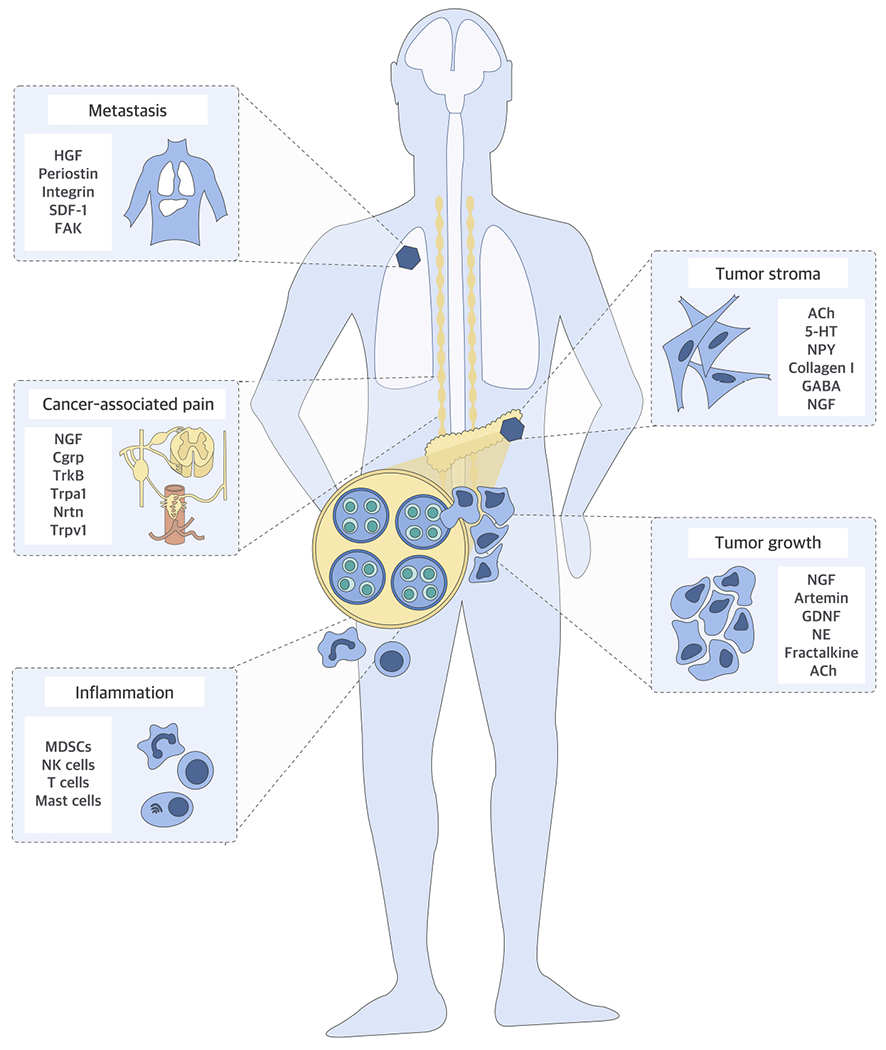Figure 1. Neural Influences in Cancer.

Nerves have been shown to impact multiple aspects of tumorigenesis. They can enhance the growth of primary or metastatic cancer cells directly through secereted factors and their receptors e.g. nerve growth factor (NGF), Artemin, glial-cell-line-derived neurotrophic factor (GDNF), fractalkine, neurturin (Nrtn), tropomyosin kinase receptors (Trk), stromalcell derived factor-1 (SDF-1), hepatocyte growth factor (HGF), periostin, integrin subclasses, focal adhesion kinase (FAK) or indirectly by promoting tumor-associated, pro-tumorigenic inflammation involving myeloid-derived suppressor cells (MDSC), natural killer (NK) cells. Nerves are also major modulators of the stroma, in which vascular or lymphatic endothelial cells, or cancer-associated fibroblasts are responsive to neural signals e.g. norepinephrine (NE), acetylcholine (Ach) and 5-HT, owing to their expression of neurotransmitter receptors such as GABA receptors. Pain is the most unpleasant symptom associated with cancer, and cancer-secreted neuropeptides such as calcitonin-generelated peptide (CGRP) and neuropeptide Y (NPY) overstimulate the damaged peripheral nerve endings to cause neuropathic pain.
